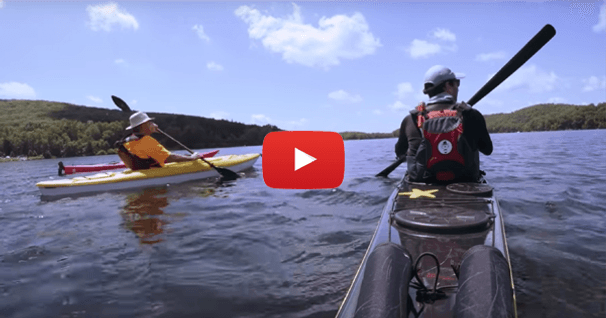Most Important Sea Kayak Beginner Skill
There is one kayak skill which says “I’m a self sufficient paddler.” It's not rolling, and it has nothing to do with a certification level. So how do you tell if a kayaker is expedition ready? Someone you know won't capsize and need rescuing in the middle of a big trip? Maybe you want to join a kayak trip but you don’t know how to show without a doubt, that you are expedition ready.
The Sidescull
When I want to know if someone is self sufficient, I want to see them do a sidescull. Why not just roll? You might think rolling is the ultimate self rescue. Here's the thing. Being able to roll in calm water is not like rolling in rough water. Your roll might not work when you actually need it. Unless you can demonstrate that you are not just rolling up. You are not relying on momentum that can be knocked out of you by a wave. You are not relying on paddle support which may be compromised by the rough aerated water. You are not relying on precise timing. You need a technique which allows you to use the waves to support and help you. To let you time your recovery with the motion of the water.
What you need is not just any roll, but one where you can come up slowly, and be in control every step of the way. It allows you to breath, look around, and time your recovery to let the wave help you. It’s not like a roll which doesn't involve paying attention to the conditions. That's what I look for. someone who is mindful of the waves and knows how to flow with the power. And the sidescull is the key skill that gives you that mindfulness, and ability to perfectly time your efforts with the power of the wave, to make rolling or bracing as effortless as possible.
50 years of lightweight, maneuverable, high-performing kayaks.
Check out this interview with Tom Keane, Eddyline Kayaks Co-Owner, on their journey!
You can let the wave put you back upright. It's a big contrast to the regular roller who tries, fails, just to end up upside down again for another try. With no idea if this one will work. What’s surprising is that the sidescull is way easier to learn than rolling the regular way. At least it’s easy once you understand how you move with your kayak. The Inuit didn't take anyone on a hunt until they had mastered this. I first learned the side scull from watching a video demonstration. I took my big high volume hard to roll kayak to practice. It took me a while because I was missing all the critical pieces like how to outfit the kayak to make this work, how to move your hips to unlock your flexibility, and the counter intuitive way your back has to move. I had to figure it out with trial and error.
Now that I understand what you need to make it work, it's one of the first thing I teach kayakers who want to become serious paddlers. It changes how you feel in your kayak to make everything else about kayaking much quicker to learn. If you have tried and failed it's probably because you are missing one of the few important parts.
Practice on the Water
Watch the video, practice on the water. I showed you how to move with your kayak in a different way. How to rotate your body, starting at the hips. How to use your back to get support on the water. To float up, instead of relying on your upper body strength to heave yourself out of the water. That kind of roll doesn’t work in dynamic water. Keep practicing the sidescull and you will achieve sufficiency.
Related Articles
By changing how you edge and balance your boat you can increase your stability and adaptability. Using…
People generally think paddling a longer kayak will make them go straighter, but with proper technique…
One of the great things about stand-up paddle boarding is that it can be a remarkably safe and…
As a professional educator and a kayaking instructor I must begin this article by saying: I believe…




